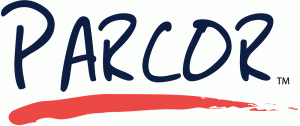Confined Space Classification
At PARCOR, our consultants specialise in identifying confined spaces using definitions and guidelines from the Victorian OHS Regulations, Model WHS Regulations, and Australian Standards. Leveraging their extensive experience, our team accurately determines which areas qualify as confined spaces during activities such as inspection, cleaning, repairs, or maintenance.
Additionally, we identify spaces that may become confined spaces due to work processes like welding. By evaluating these factors, PARCOR ensures that all potential hazards are recognised, maintaining the highest standards of occupational health and safety.
What’s included?
- Analysis of all possible confined spaces on your site
- Development of a single page classification of each confined space using either Victorian OHS, Model WHS or Australian Standard definitions
- Development of a register of confined spaces on your site
How does it happen?
- After getting the “go ahead” we will contact you to arrange a suitable date or dates to attend the site
- We will tour your workplace escorted by someone that knows the location of any suspected confined spaces, this is often by someone from a maintenance department.
- We will be able to classify approximately 30 spaces per day depending on any interruptions that occur
- From there, we will spend some time at our desk analysing the information we have captured and finalise the classifications and produce a register
Confined Space Risk Assessments
At PARCOR, our consultants conduct comprehensive risk assessments of confined spaces using definitions and guidelines from the Victorian OHS Regulations, Model WHS Regulations, and Australian Standards. Leveraging their extensive experience, our team thoroughly examines potential hazards that may occur during activities such as inspection, cleaning, repairs, and maintenance.
We also assess spaces that may become confined spaces due to work processes like welding.
These risk assessments become a valuable resource when planning for work or developing work method statements within the confined space, ensuring all potential hazards are recognised and addressed, and maintaining the highest standards of occupational health and safety.
What’s included?
- Risk assessments of all confined spaces in your workplace are conducted
- Development of a register of confined spaces on your site
- Printer friendly copies of risk assessment provided in PDF format that cover the range of hazards identified throughout the assessment
How does it happen?
- After getting the “go ahead” we will contact you to arrange a suitable date or dates to attend the site
- We will tour your workplace escorted by someone that knows the location of any suspected confined spaces, this is often by someone from a maintenance department.
- We will be able to risk assess approximately 12 spaces per day depending on any interruptions that occur
- From there, we will spend some time at our desk analysing the information we have captured and finalise the risk assessments and produce the final documents
Rescue Plans
At PARCOR, our consultants develop emergency procedures as required by the Victorian OHS Regulations, Model WHS Regulations, and Australian Standards. Our team leverages their extensive knowledge of rescue techniques to create thorough and effective rescue plans. Additionally, our team can make recommendations on any equipment that may assist in the rescue.
These procedures ensure that employers are well-prepared to rescue an employee from a confined space and provide first aid, maintaining the highest standards of occupational health and safety.
What’s included?
- Emergency procedures developed for a range of spaces on your site
- Printer friendly copies of the emergency procedure provided in PDF format that cover the range of hazards identified throughout the assessment
How does it happen?
- After getting the “go ahead” we will contact you to arrange a suitable date or dates to attend the site
- We will tour your workplace escorted by someone that knows the location of any confined spaces as well as any rescue equipment the site has.
- We will be able to develop emergency procedures for approximately 12 spaces per day depending on any interruptions that occur. It is common that a rescue plan may be suitable for a range of spaces such as 4 silos that are all similar and side by side.
- From there, we will spend some time at our desk analysing the information we have captured and finalise the rescue plans and produce the final documents




